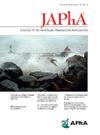在医疗补助药剂师提供者的地位:一个国家卫生主任对政策和实践的看法。
IF 2.5
4区 医学
Q3 PHARMACOLOGY & PHARMACY
Journal of the American Pharmacists Association
Pub Date : 2025-09-26
DOI:10.1016/j.japh.2025.102932
引用次数: 0
摘要
尽管扩大了临床权威,但由于过时的报销政策和行政限制,药剂师在医疗补助计划中往往面临完全提供者地位的障碍。本文描述了爱达荷州通过专业中立的“什么,而不是谁”报销框架将药剂师整合到其医疗补助计划中的综合方法。爱达荷州允许任何有执照的卫生专业人员在其法律执业范围内为医疗补助覆盖的服务收费,而不是按提供者类型定义资格。关键改革包括法律变更、监管更新、提供者注册优化以及药剂师报销与中级提供者的对齐。药剂师现在可以注册为提供服务的提供者,并使用他们的国家提供者标识符直接为服务买单。爱达荷州的模式表明,药剂师完全融入医疗补助计划可以在一个可扩展的、两党合作的、适应性强的框架内实现,这为其他寻求增加医疗保健机会的州提供了一个政策路线图,尤其是在农村地区。本文章由计算机程序翻译,如有差异,请以英文原文为准。
Pharmacist provider status in Medicaid: A state health director’s perspective on policy and practice
Despite expanded clinical authority, pharmacists often face barriers to full provider status in Medicaid owing to outdated reimbursement policies and administrative restrictions. This paper describes Idaho’s comprehensive approach to pharmacist integration into its Medicaid program through a profession-neutral “what, not who” reimbursement framework coupled with its “standard of care” regulatory framework. Rather than defining eligibility by provider type, Idaho allows any licensed health professional to bill for Medicaid-covered services within their legal scope of practice. Key reforms included statutory changes, regulatory updates, provider enrollment optimization, and alignment of pharmacist reimbursement with midlevel providers. Pharmacists can now enroll as rendering providers and bill directly for services using their National Provider Identifier. Idaho’s model demonstrates that full pharmacist integration into Medicaid can be achieved in a framework that is scalable, bipartisan, and adaptable, offering a policy roadmap for other states seeking to enhance access to health care especially in rural settings.
求助全文
通过发布文献求助,成功后即可免费获取论文全文。
去求助
来源期刊
CiteScore
3.30
自引率
14.30%
发文量
336
审稿时长
46 days
期刊介绍:
The Journal of the American Pharmacists Association is the official peer-reviewed journal of the American Pharmacists Association (APhA), providing information on pharmaceutical care, drug therapy, diseases and other health issues, trends in pharmacy practice and therapeutics, informed opinion, and original research. JAPhA publishes original research, reviews, experiences, and opinion articles that link science to contemporary pharmacy practice to improve patient care.

 求助内容:
求助内容: 应助结果提醒方式:
应助结果提醒方式:


